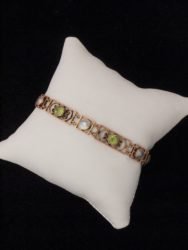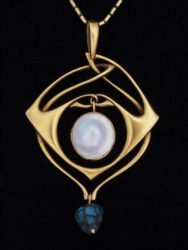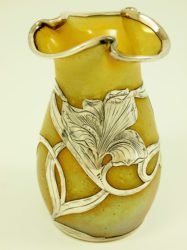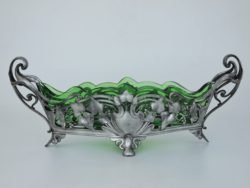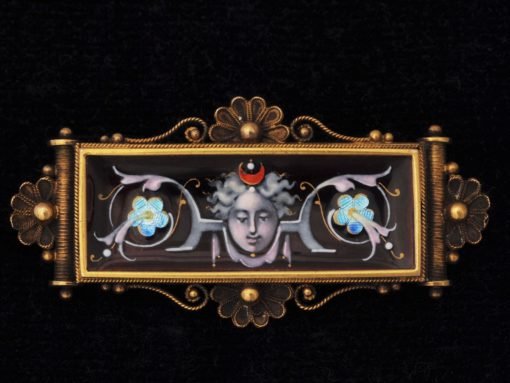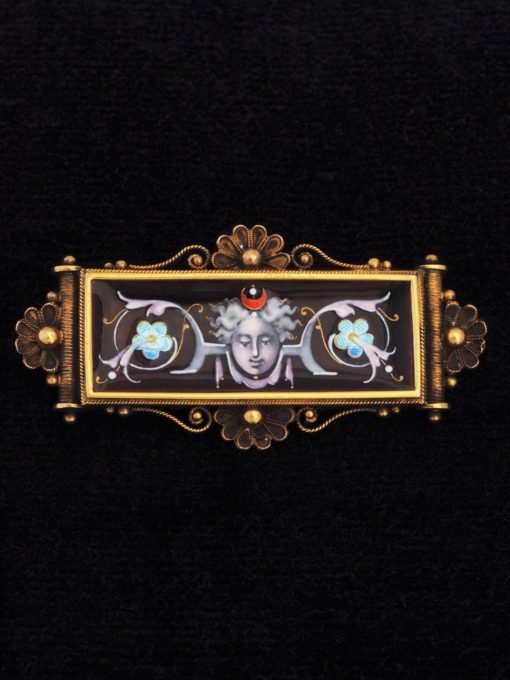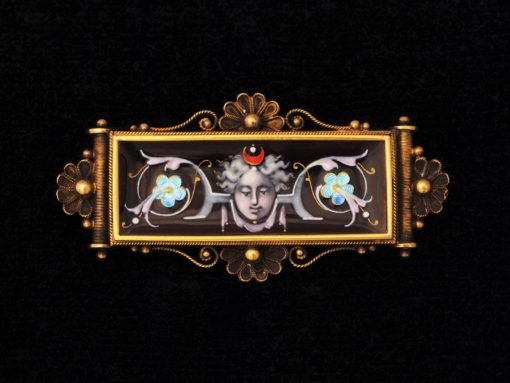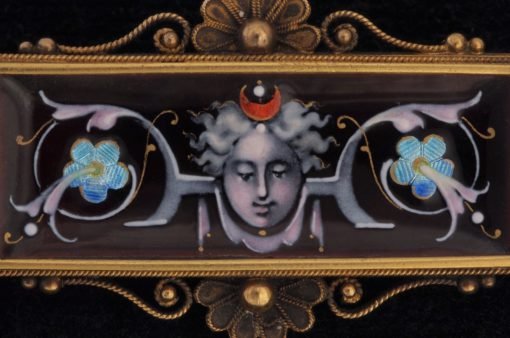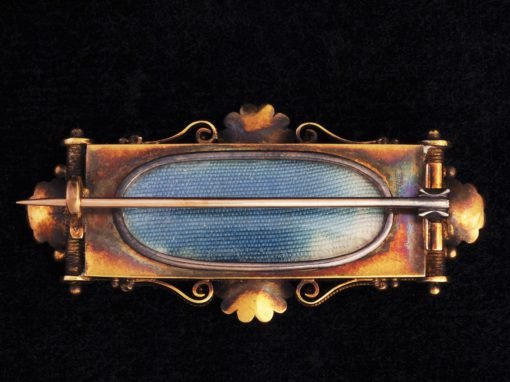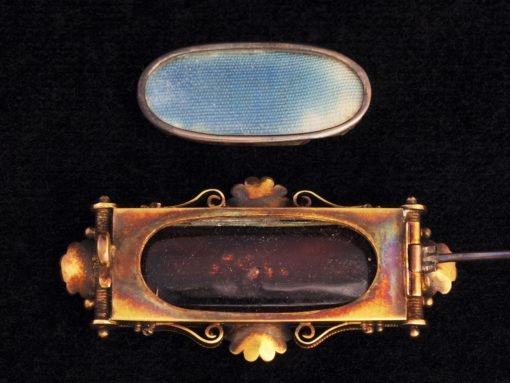Murrle Bennett Gold, Peridot and Mother-of-Pearl Bracelet*
Bracelet from Murrle Bennett crafted in 9 ct. gold, so very typical of the style of jewellery supplied by them to Liberty’s during the early 1900’s. Openwork in design with alternate rectangular and square sections,…
Archibald Knox Gold Pendant for Liberty
Gold pendant with an openwork entrelac design from the drawing board of Archibald Knox and dating from circa 1905. Set with a central blister pearl drop and with a turquoise matrix lower drop, this pendant…
‘Lady on The Seine’ by Dietz Edzard*
Ornately framed oil on canvas by the German born artist Dietz Edzard (1893-1963). This is an atmospheric half length portrait of an elegantly dressed young woman taking refreshment whilst seated on a verandah raised above…
Loetz ‘Candia’ Vase with Silver Overlay
Little cabinet vase from Loetz in opaque ‘Candia’ glass with a trefoil rim, further decorated with an applied Art Nouveau ‘Silberiris’ design in pure silver. Loetz collaborated with a company in the US known as…
WMF Flower Dish
Pewter flower dish from WMF with the original green cut glass removable liner. So Art Nouveau, with its flowing outline, featuring an openwork whiplash design framing leaves and berries of ivy. Originally electro-plated but most…
Contact Details
Tel: +44 (0)7802 872363
0345 6071772
Email: info@nouveaudecoarts.com
French Gold Brooch with Enamelled Mythical Scene
Item Description
Ornate French 18 ct. gold brooch featuring a rectangular enamelled image of a mythical woman, possibly Selene, goddess of the moon.
She has her eyes slightly downcast, and immediately above her somewhat wild looking hair sits a crescent moon.
Top quality detail to the enamelling which must have taken many hours to complete.
At each side of her is a foil backed blue enamelled flower encircled by swirling stylised stems and leaves.
The enamelled plaque is framed within a highly detailed outer design in gold showing superb craftsmanship and attention to detail.
On the reverse is a removable oval glazed fitment which reveals beneath it a locket compartment.
Late 1800’s, with a width of 5 cms., and probably from either Paris or Limoges, but we can find no signature or mark of any kind.
